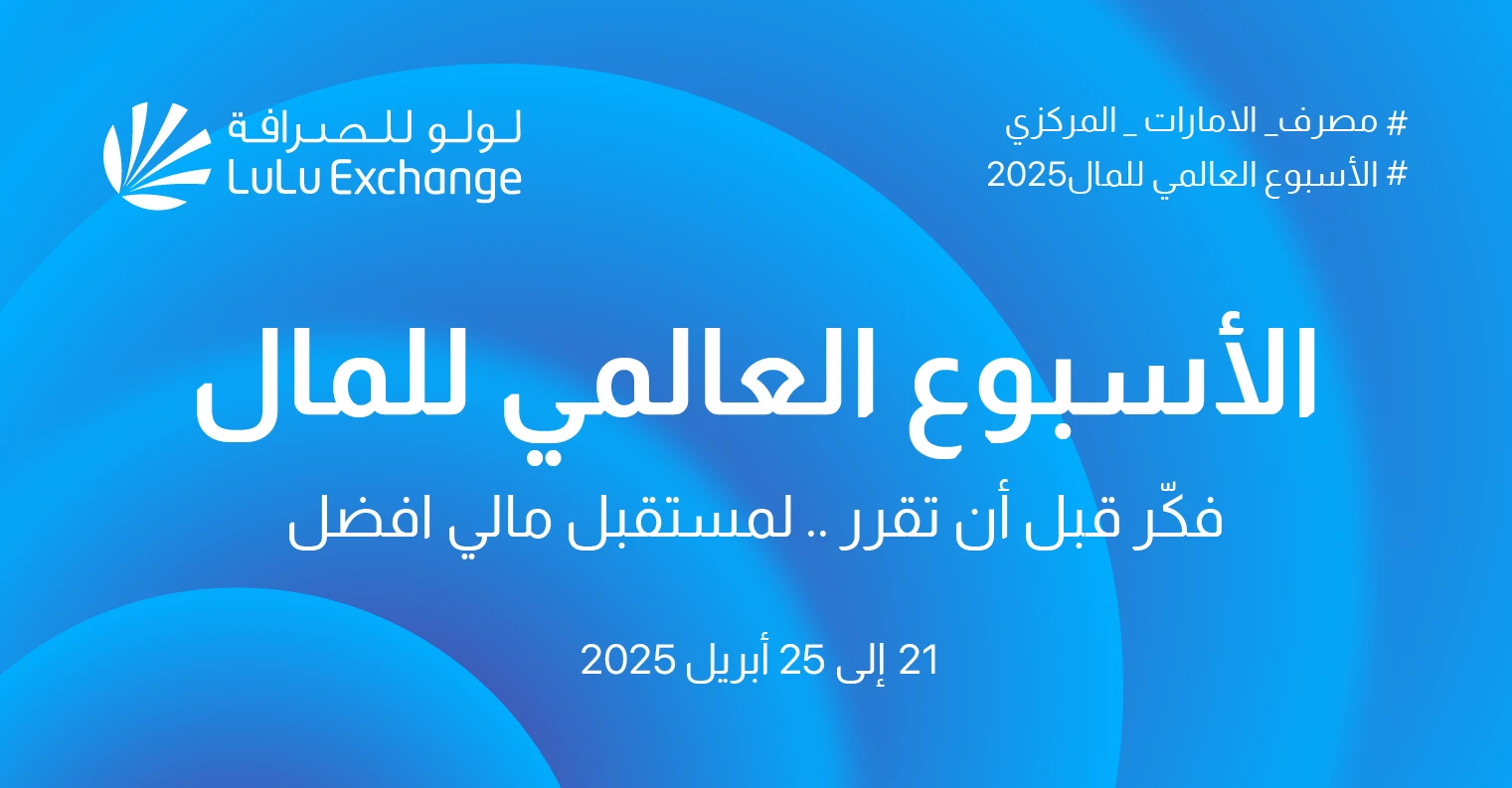

The Past
GCC’s Remittance Industry has witnessed a fast-paced transformation in the past 20 years. The total outbound remittance from the GCC countries has grown from USD 25.77 Billion to over USD 118 Billion recording 357 % of cumulative growth during the period. During the early 2000 period, the majority of mid and lower-segment customers preferred transferring money to their loved ones through the mode of draft instrument. During the period, the customers had to spend over 20 minutes completing a remittance transaction. Customers used to send physical drafts with a handwritten letters to their loved ones which took over 7 days to reach the beneficiary and even more days to encash the instrument. For many, sending money was the utmost happiest and cherishing moment in their monthly routine. The Exchange house branches hardly had around 3 to 4 computer systems, where the data entry operators (draft data entry process) occupied a prominent position and FLAs were predominantly into recording the sender and beneficiary information in a pre-printed remittance advice form and passing it to the data entry operators.
The advancements in core application systems, the introduction of third-party specialized remittance and forex applications, and the development of industry-oriented technical subject matter experts have positively enabled many exchange houses to initiate Application Programming Interface (API) with drawee banks and Money Transfer Operators which has helped to change the concept of having multiple drawee banking arrangements in the same receive market. The advent of technology has helped many of the Exchange houses to introduce, innovative and inventive products and services which drastically reduced the Turn Around Time between the money send and receive process. The advancement in technology has forced the customers to change their desire, demand, and consumer behavior within no time from the traditional draft based to the Electronic Money Transfer Services(EMTS). The FLAs at branches started getting independent systems and served the customers by eliminating the dependency of the data entry operator.
The efficiency of treasury management and working capital has radically improved through the advent of Treasury Management Systems. Many South Asian banks have entered the GCC’s Exchange house industry through management agreement or share acquisition which has facilitated the introduction of Banking ethos, internal process, and policies to the Exchange house industry. Many Exchange houses and branches were managed by the Indian Banking veterans and the customers were served by benchmarking the Indian banking standards. Forward-looking Exchange house brands started thinking out of the box to differentiate their product offerings and introduced loyalty cards, privilege forex rates, cheques, and telephonic order acceptance facilities to HNW customers. The proactive branch managers were performing the role of “Brand Ambassadors” in their micro markets and lured customers from the immediate competition through deep relationship connectivity.
The 9/11 incident forced the regulatory bodies in different GCC countries to re-think the importance and approach towards Compliance, Anti-Money Laundering, and Risk Management perspectives. Many new regulations, directives, and governance practices were enforced in the industry which obligated many Exchange houses to invest in Compliance, Risk Management and Internal Control systems, resources, and subject matter experts. While the industry was growing at an unprecedented growth rate, many exchange houses started witnessing cyber security compromises, frauds, and threats that were new to the industry, and the exchange houses and Instant Money Transfer Operators (IMTOs) had to earmark budgets and specialists to protect the reputation, data, money, and core application from such cyber threats.
The global recession during 2008 and associated financial crunch have forced many banks to seriously think about alternative revenue channels. Many banks changed their conventional outlook and entered the retail remittance space which led to the erosion of market share from the exchange house industry to banks. Today among the top 2 key send markets in GCC – UAE and Saudi, banks handle over 25% and 92% of retail remittance market share in the respective markets. For the banks, remittance services were a forward integrated product offering, as the majority of mid and high-income segment customers were availing of various banking retail services. The introduction of the Electronic Wages Payment Monitoring System (EWPMS) in the UAE was a revolutionary development that helped in structuring and standardizing the payment of wages and salary payments in the country. Exchange houses were the most beneficial service providers in this initiative as the banks were not interested in catering to the lower-ticket size employee class payments. As part of new revenue exploration initiatives, future-looking exchange houses advanced into Digital Remittance, Payment Solutions, Travel Currency Solutions, and Business 2 Business (B2B) trade-settlement transfer solutions which positively contributed towards the revenue enhancement.
The Present
The survival of the fittest concept was well-validated across the GCC’s Exchange House industry where those brands that underestimated the importance of Change, Innovation, Compliance, and Corporate Governance have effaced the arena. Telecommunication, Fintechs, and Start-ups are occupying prominent space in the Cross-border money transfer industry by capitalizing on their existing customer database, infrastructure, expertise in technology, and economies of scale strengths. Today the cross-border money transfer industry in the GCC market consists of omnichannel players representing multi-faceted industries. Digital penetration will rapidly continue where many new entrants have already equipped their battleground and strategic tools through forward and backward integrated service offers where salary credit, routine purchases, bill payments, top-ups, money transfer, loan application/utilization, and wealth management happen in the same platform. The currency netting-off model by the send and receive partners have brought a high level of cost optimization and working capital efficiency to the remittance operational ecosystem. We have already witnessed Crypto based settlements and social media-based money transfer services which the millennials and generation Z will highly opt for in the near future. Collaborative ecosystems are getting shaped where the strengths of different brands are collaborated to offer value additions and to enhance the Customer Life Cycle.
The Future
The GCC’s remittance industry will continue its growth in outbound remittance except for a few markets. Like every industry transformation and brand disruption, the Cross-border money transfer service industry will also witness the “elimination of intermediaries” between the money send and receive process. New technologies are drastically changing the customer experience, front, middle and back-office concepts of the Exchange House Industry. Digital Onboarding Solutions will be a key enabler and accelerator of the future of money transfer. Opportunities for new product development and value creation will continuously evolve to address every customer’s pain points. Cross-Industry brand collaborations will play a critical role where the strengths of various brands will be collaborated to offer strategic differentiation in the marketplace. Data Science, Artificial Intelligence, and Business Automation will be more valuable and tributary in the Cross-border money transfer industry in many ways we never visualized that would have been possible. Cross-Border Money transfer know-how and services that were once available through established financial institutions will be supplied as “plug and play” services with strong and deep regulatory monitoring which will increase the level and penetration of competition we experience today. A huge market share is waiting for Exchange Houses in the B2B trade-settlement transfer solution segment which is still not capitalized the way in which it ought to be. We expect the transformation in regulatory outlook and many regulators will start adapting the concept of purpose-led regulation to balance between encouragement of fintech innovation and mitigating risks in the industry. At the same time, in the event of the latest FATF decision, regulators will have a more rigorous outlook on the industry and microscopic review of the business and Corporate Governance conduct.
The future belongs to those who embrace future-facing technology and remain nimble-witted to capitalize on the evolving business opportunity by placing customers at the center of every strategy and by strongly embracing Compliance, Risk Management, and Internal Control principles. Our industry will soon be changing its own definition and will be redefined as the “value transfer industry” from the present “money transfer industry”. The cognizant industry participants will advance with one mantra – “Think Tomorrow, Act Today”
Thank You!
Edison Fernandez
Edison Fernandez

Popular BLOG

April 22, 2025
The Global Money Week

December 16, 2024
Pay Smart, Live Easy

December 13, 2024
Taxation in Web3: Simplifying Compliance in the Crypto Age

December 13, 2024
Decentralized Finance for the Digital Age

December 13, 2024
Philanthropy with Blockchain: Transforming Charitable Giving

December 13, 2024
A New Page for Blockchain-Driven Transactions

December 13, 2024
Digital and Physical Asset Ownership in Web3

December 13, 2024
Redefining Currency Exchange

December 13, 2024
Redefining Currency Exchange

December 13, 2024
Transforming the Insurance Landscape



